This website uses cookies
This website uses cookies to enable it to function properly and to analyse how the website is used. Please click 'Close' to accept and continue using the website.


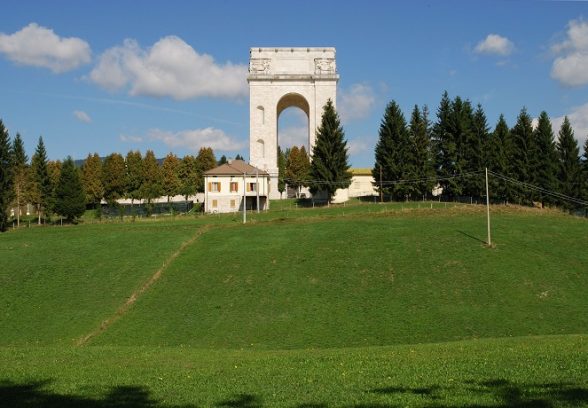
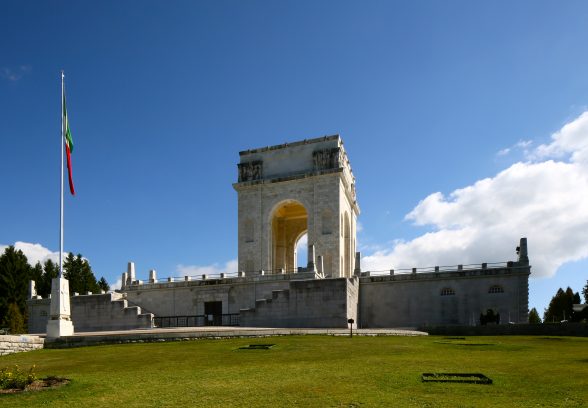
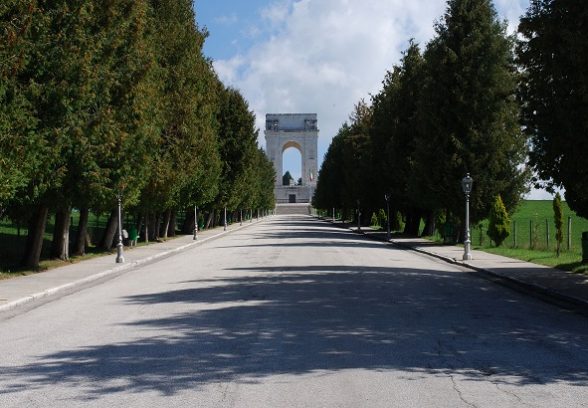
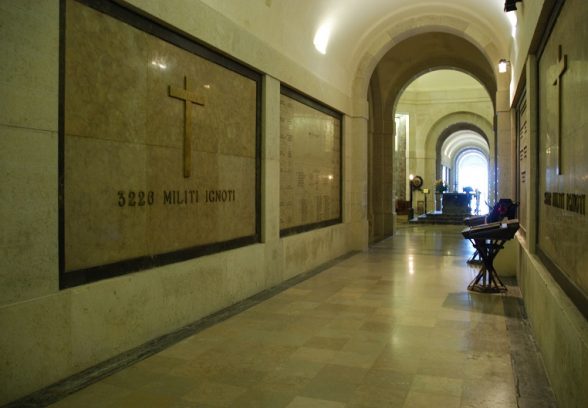
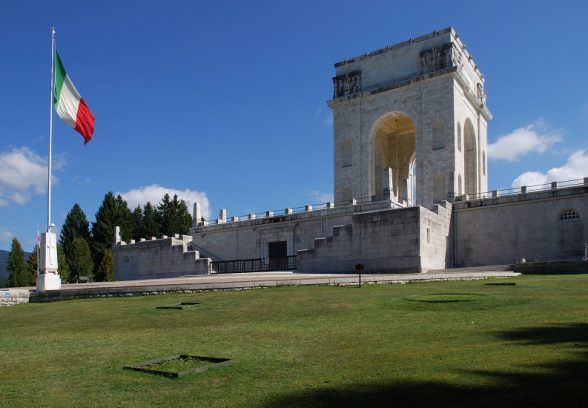
Italy: Asiago, Sacrario Militare or the Sacrario del Leiten
Architect: Professor Orfeo Rossato
Location: Asiago, Italy
This monument is prominently situated on the Colle Leiten at the end of a long rising axial approach high on the Asiago Plateau, 1058 metres (3471 feet) above sea-level, where so much fighting took place right through the war. And although the triumphal arch form was used for war memorials in Italian cities such as Genoa and Bolzano, this is the only example of the use of this familiar and resonant Roman military architectural form for the monuments associated with the huge Italian mass graves. Proposed in 1932, inaugurated in 1938 and designed by Prof. Orfeo Rossato of Venice, this giant, free-standing arch, which rises above a symbolic Ara Votiva, does not follow conventional Roman precedent, for it stands four-square – a quadrifrons – with an arch of equal height on each side. The architectural elements are simplified and the plain piers flanking the arches are relieved by two arched niches. Rather than an inscription, the attic above the cornice carries stylised winged figures at the corners. The sculptors were Monti and Zanetti.
This arch should be compared less with the Arch of Titus in Rome as with Chalgrin’s Arc de Triomphe in Paris and Lutyens’ All-India Arch in New Delhi (the latter’s masterpiece at Thiepval being somewhat more complicated in form). The arch rises above a massive square base, containing vaulted tunnels lined with names, between which are the remains of 33,086 Italian dead, 20,291 of them unidentified, taken from 35 nearby cemeteries. More recently, in the late 1960s, the crypt at the Asiago Sacrario has accommodated a mass grave containing the remains of 18,505 Austro-Hungarian soldiers, 12,355 of them unknown, taken from the war cemeteries at Gallio, Stoccaredo, Cesuna, Canove, Marcesina and elsewhere.
Orfeo Rossato (1885-1937) was born in Legnano and studied at the School of Architecture at Modena, wanting at first to be a painter; he designed several villas on the Venice Lido, where he lived, before designing the Asiago monument; later he went to Eritrea to design buildings in Asmara but contracted the disease there that resulted in his premature death.
Gavin Stamp
Either enter the name of a place or memorial or choose from the drop down list. The list groups memorials in London and then by country

Become a C20 member today and help save our modern design heritage.